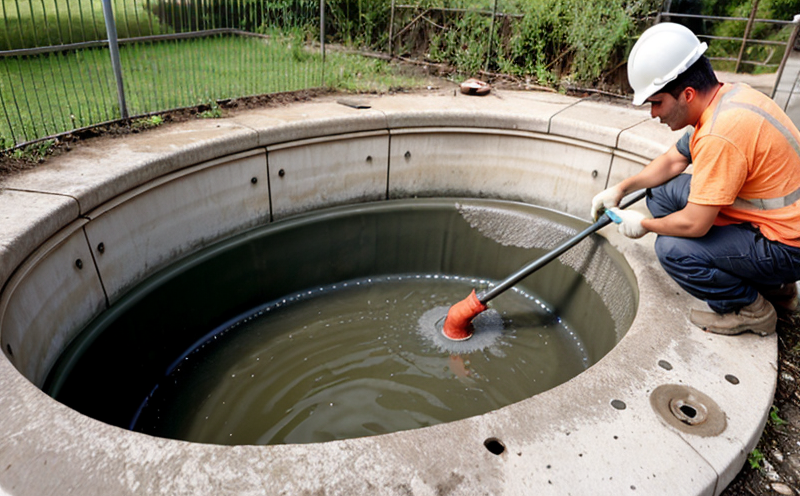Sewage system hygiene inspection
In today’s increasingly health-conscious world, maintaining high standards of sanitation and hygiene is paramount. The sewage system plays a crucial role in public health by managing waste disposal and preventing contamination. A comprehensive sewage system hygiene inspection ensures that systems are functioning effectively and safely, minimizing the risk of disease transmission.
The primary goal of such inspections is to identify potential sources of contamination and ensure compliance with international hygiene standards like ISO 14025 for environmental labels and declarations. Regular checks help in preventing cross-contamination between different waste streams, ensuring that sewage systems are operating within the specified parameters for microbiological quality.
For industries dealing directly with food safety or healthcare, these inspections are non-negotiable. The sector context is particularly important here, given the potential health risks associated with poor hygiene practices in sewage management. This service not only ensures regulatory compliance but also protects public health by identifying and mitigating hazards.
During an inspection, we employ a range of methods to assess various aspects of the system including flow rates, pressure levels, pH balance, and microbial load. The use of advanced technology such as UV sensors and ATP bioluminescence meters provides precise data on the cleanliness of the sewage, helping us make informed decisions.
Our team of experts is equipped with state-of-the-art equipment to conduct thorough inspections. These include portable pH meters for accurate measurement, flow meters for monitoring water volume, and sophisticated sampling kits that ensure all samples are collected under controlled conditions. Our approach ensures that every aspect of the sewage system receives comprehensive attention.
By conducting regular inspections, we can detect early signs of potential problems before they escalate into full-blown issues. This proactive stance allows for timely interventions, reducing the likelihood of costly repairs and ensuring continuous operation at optimal levels. In addition to compliance with regulatory requirements, this service also contributes significantly towards environmental sustainability by minimizing the release of harmful pathogens into the environment.
Our commitment to excellence in sewage system hygiene inspections is reflected not only in our rigorous inspection processes but also through our transparent reporting mechanisms. All findings are documented meticulously and communicated clearly to clients so they can take appropriate action if necessary. We believe that open communication fosters trust between us and our clients, ultimately leading to better outcomes for everyone involved.
Why It Matters
The importance of sewage system hygiene inspections cannot be overstated when considering public health and safety. Contaminated sewage can lead to the spread of various diseases, posing serious risks especially in densely populated urban areas or locations where large numbers of people gather regularly.
- Prevents disease transmission
- Maintains regulatory compliance
- Protects public health
- Ensures environmental sustainability
By ensuring that sewage systems operate at peak efficiency, we contribute to creating safer environments for all. This includes protecting against waterborne illnesses such as cholera and dysentery which can thrive in unsanitary conditions. Furthermore, these inspections help maintain the integrity of infrastructure critical for maintaining good hygiene practices.
From a broader perspective, effective sewage management is integral to sustainable development goals aimed at improving quality of life globally. It supports efforts towards reducing poverty by ensuring that communities have access to clean water and sanitation facilities necessary for good health. In essence, regular inspections are essential steps toward achieving these ambitious objectives.
Scope and Methodology
| Aspect | Description |
|---|---|
| Sample Collection | Portion sampling is taken from different sections of the system to ensure representative samples. |
| Microbiological Analysis | Testing for presence and concentration levels of bacteria like E. coli using standard methods. |
| Pathogen Detection | Identification of potential pathogens including viruses through advanced molecular techniques. |
| Sediment Analysis | Evaluation of solids content and its impact on system performance. |
Why Choose This Test
- Comprehensive assessment covering multiple parameters
- Use of advanced technology for precise measurements
- Regular monitoring ensures early detection of issues
- Mitigation of risks associated with poor hygiene practices
- Transparent reporting enhances client trust and communication





